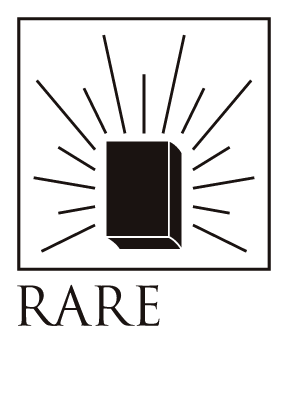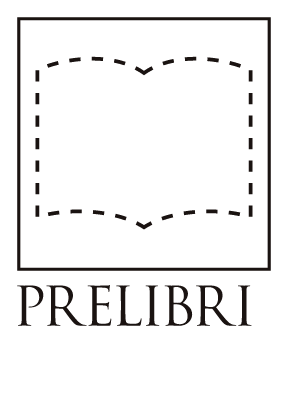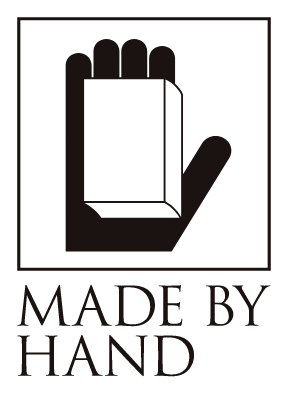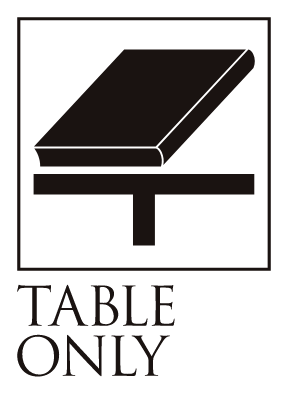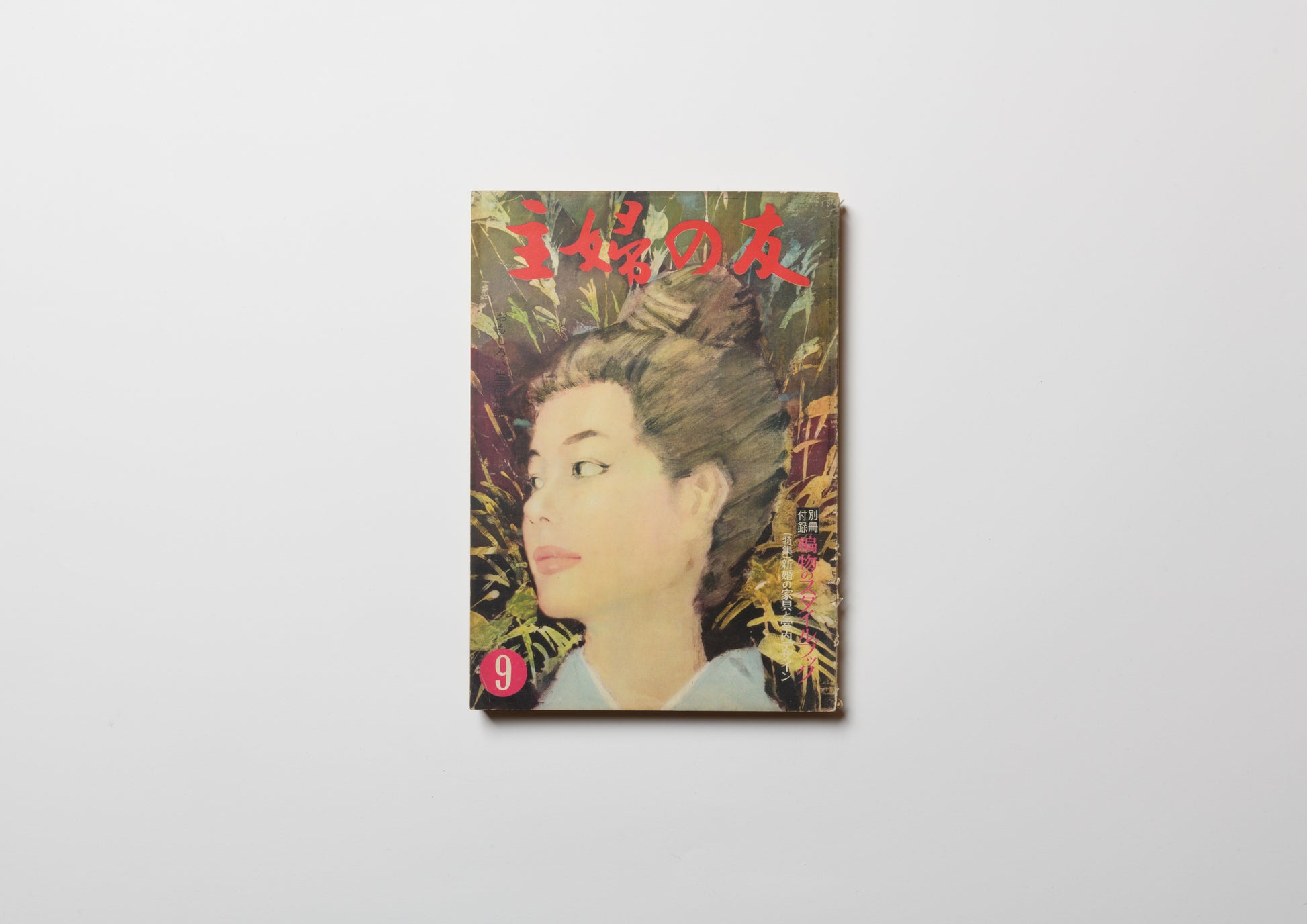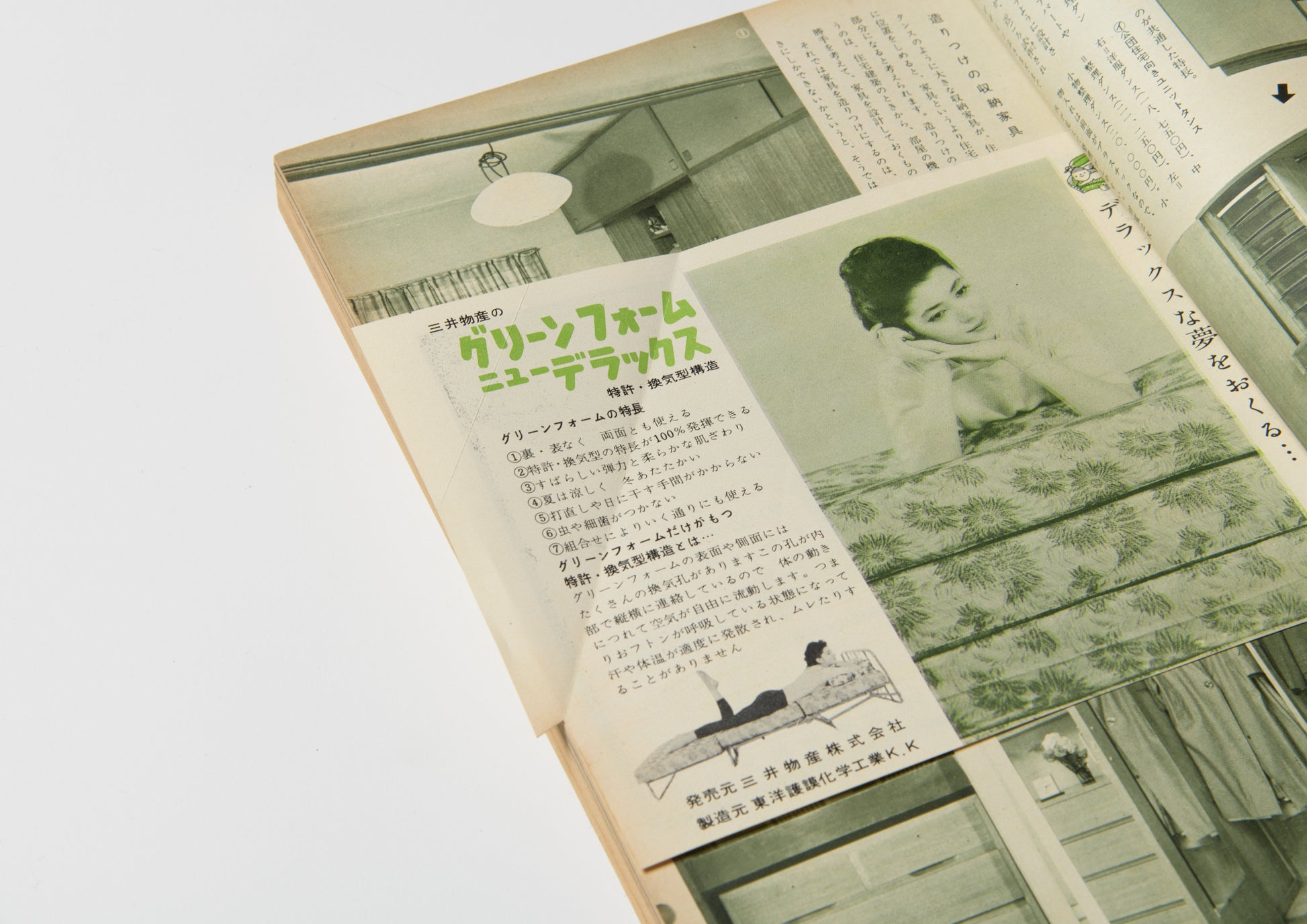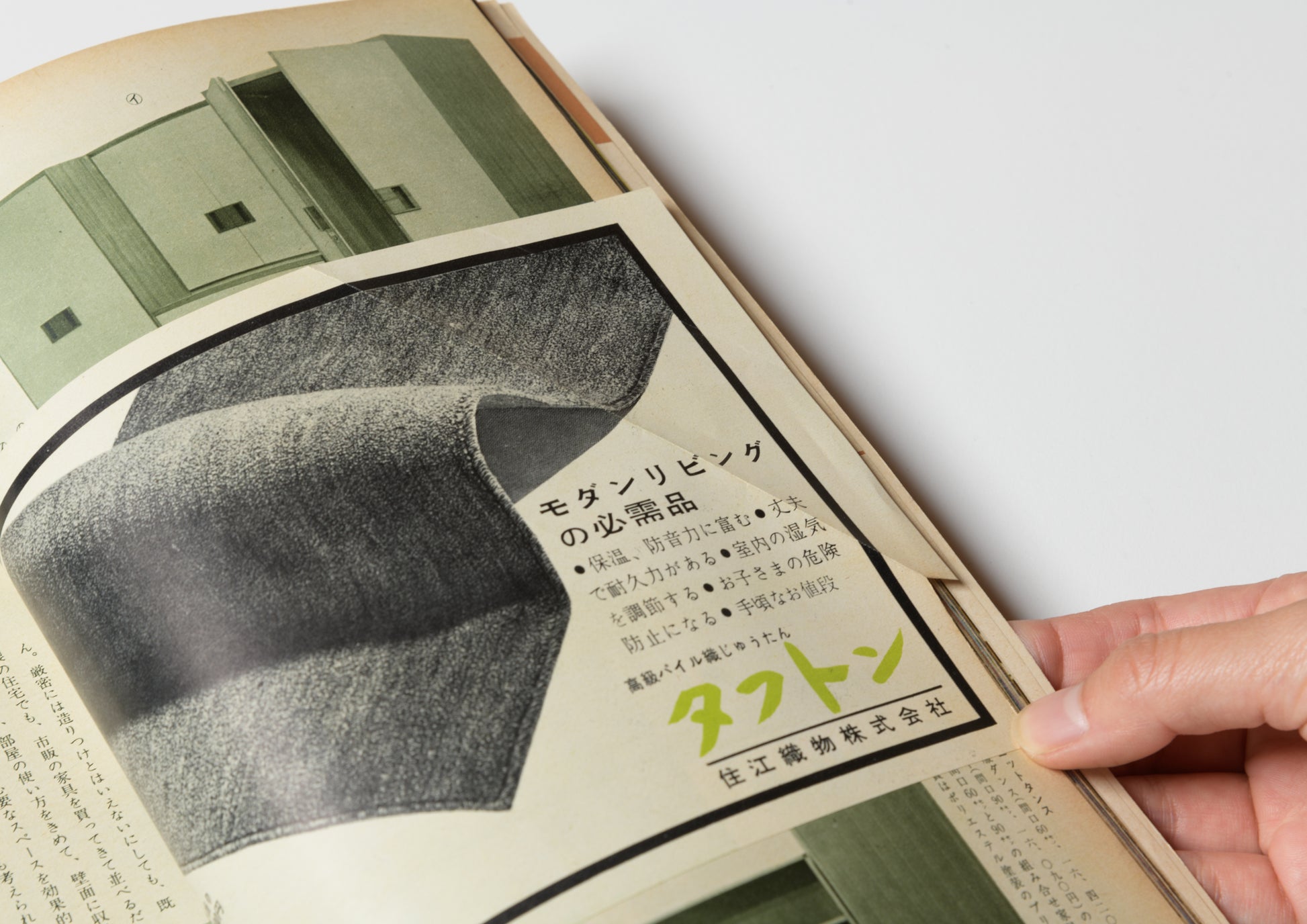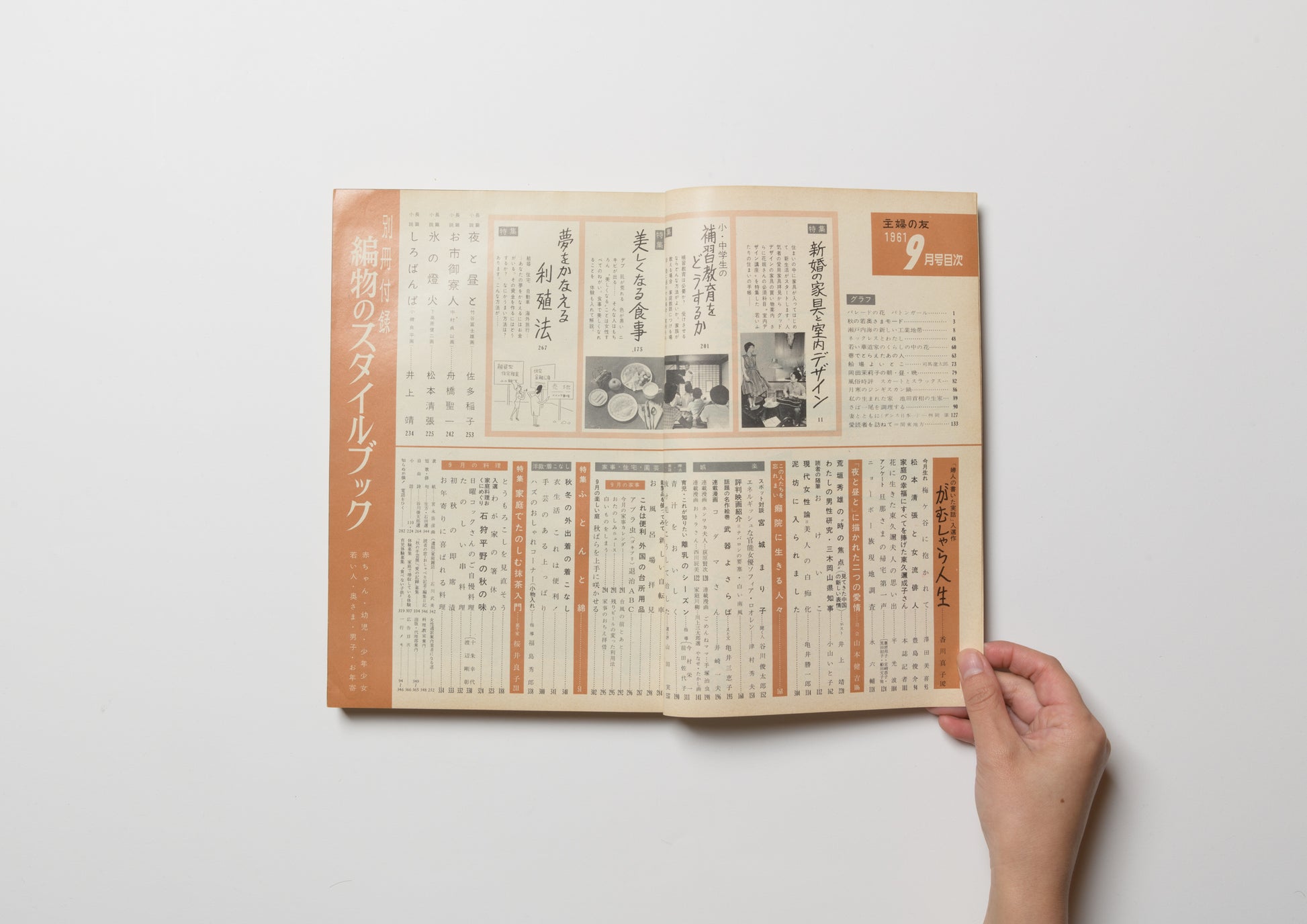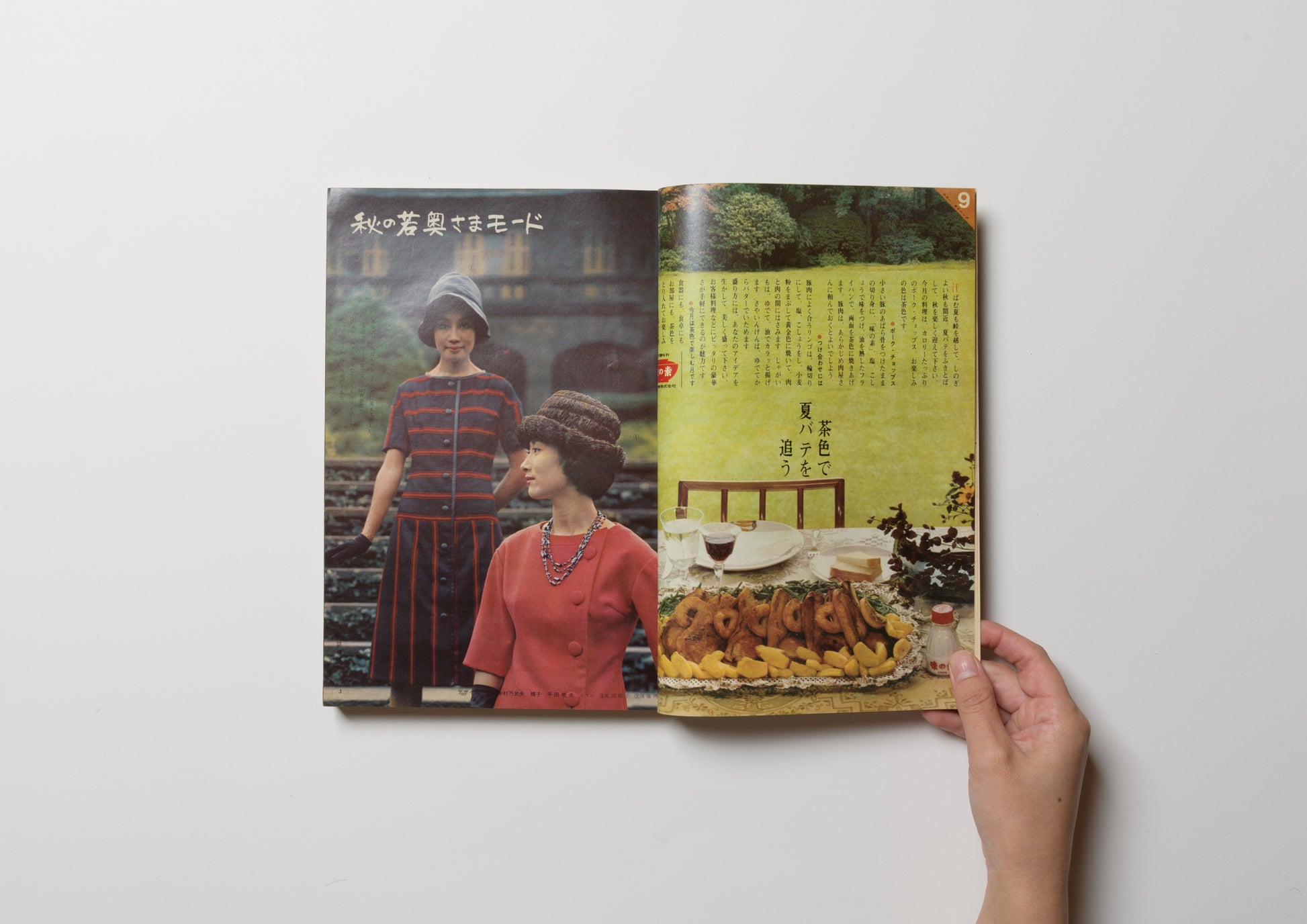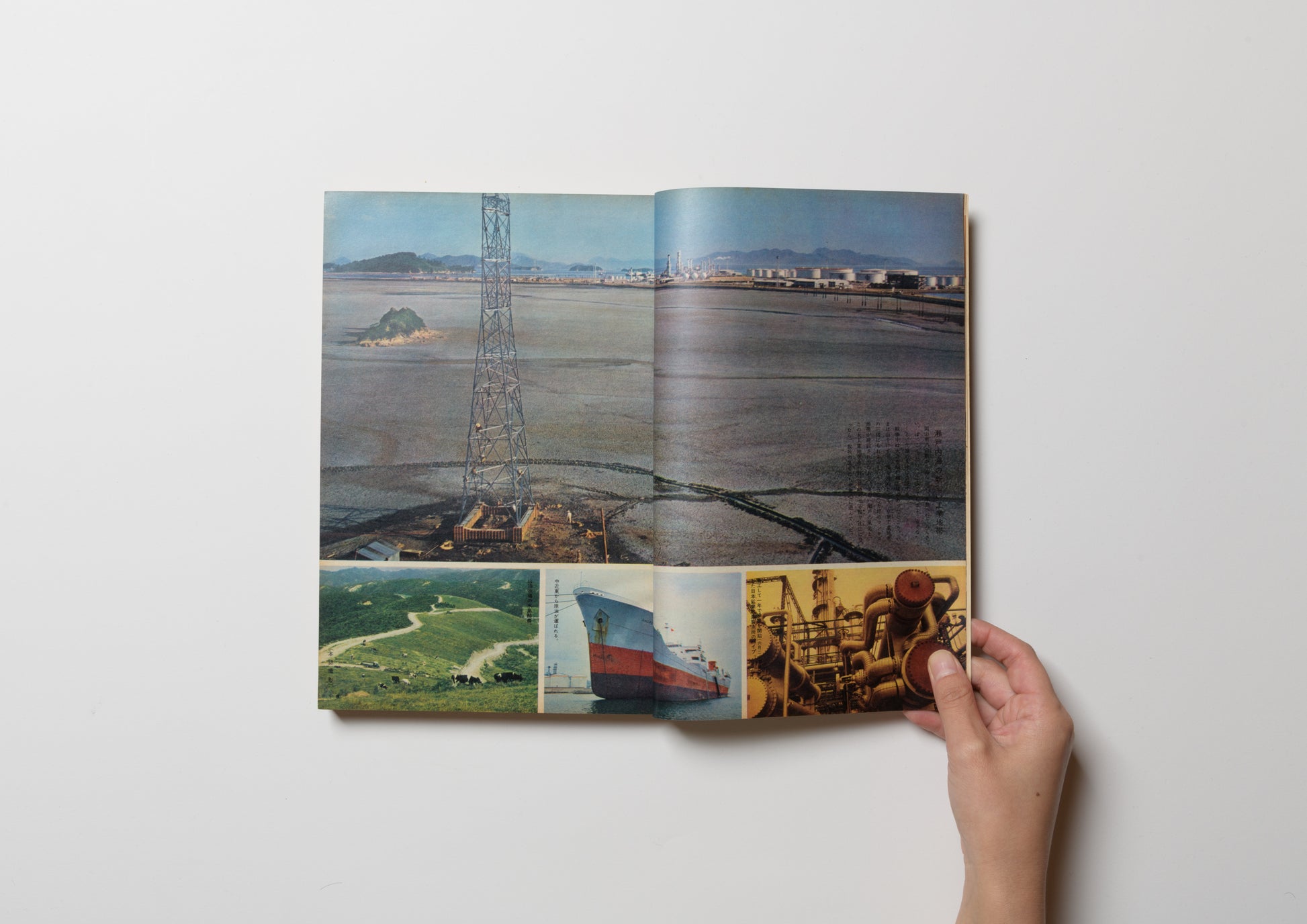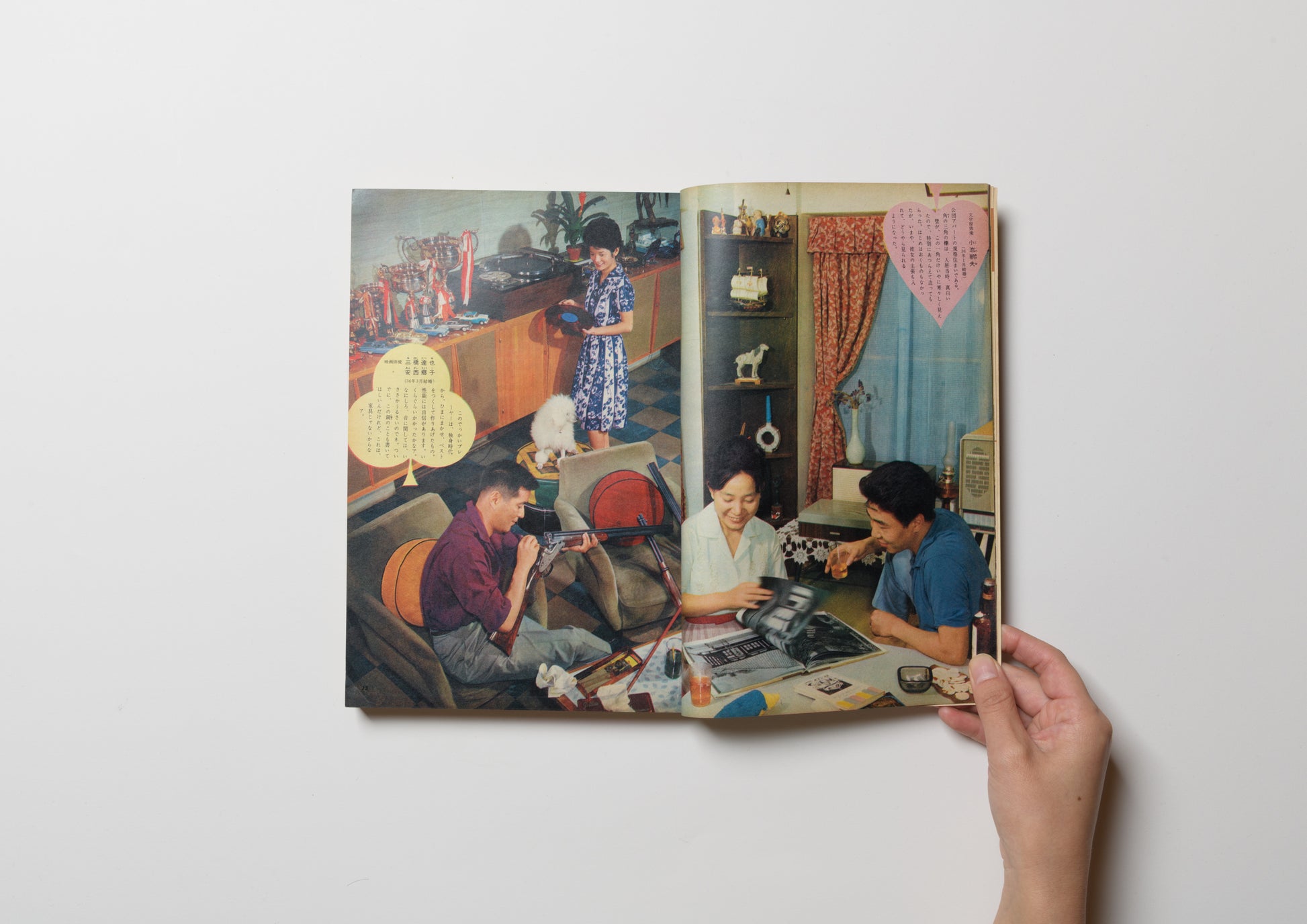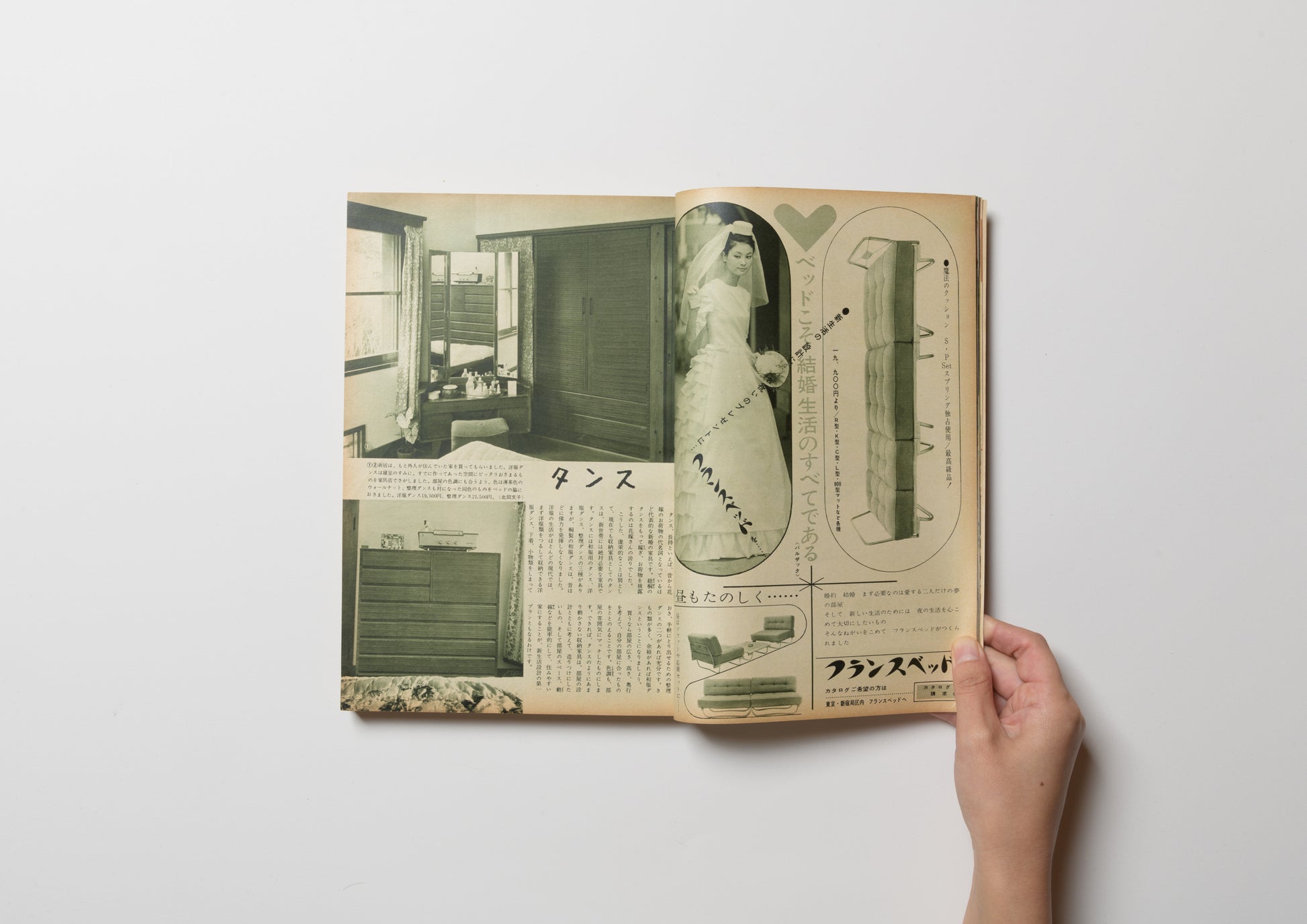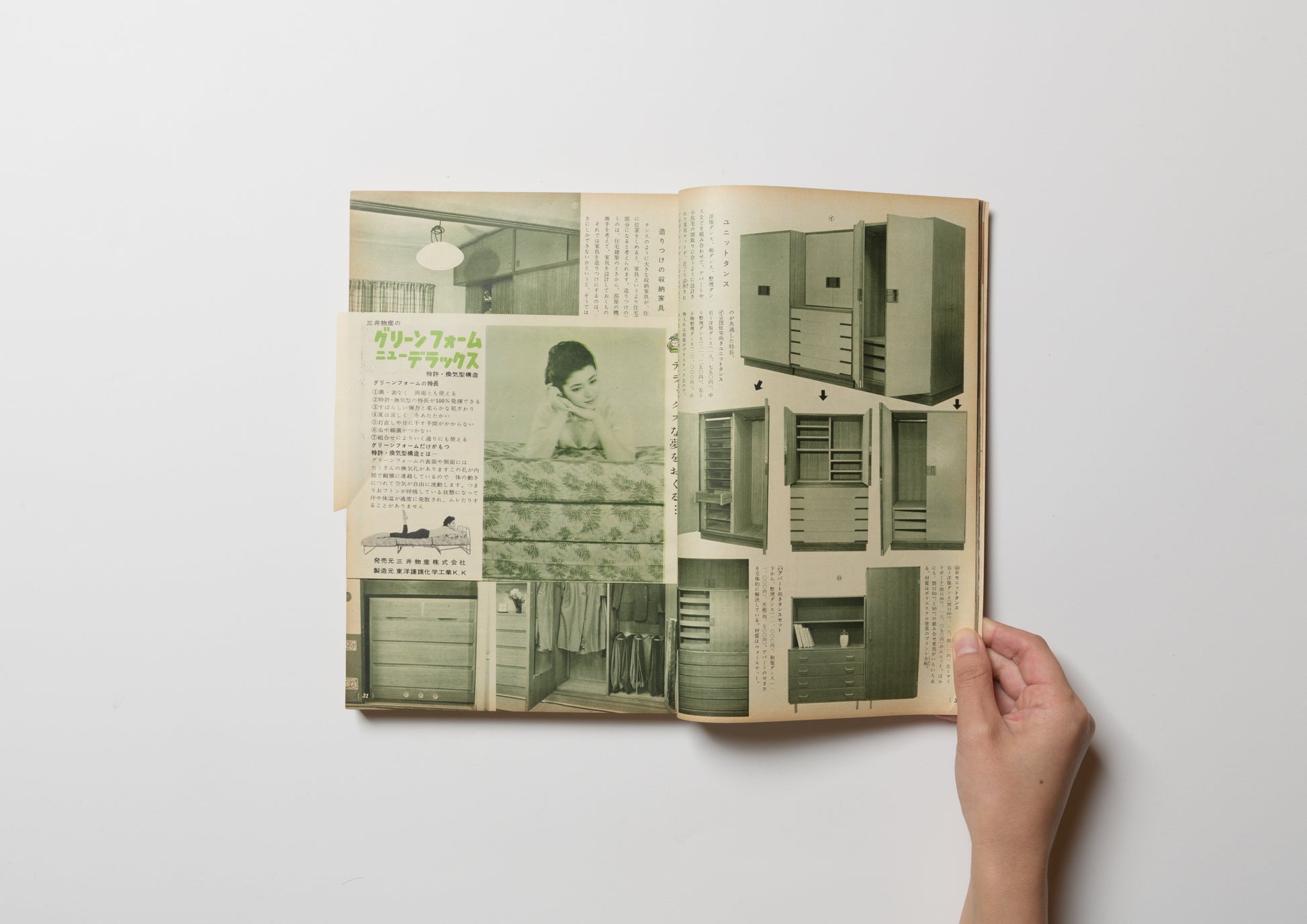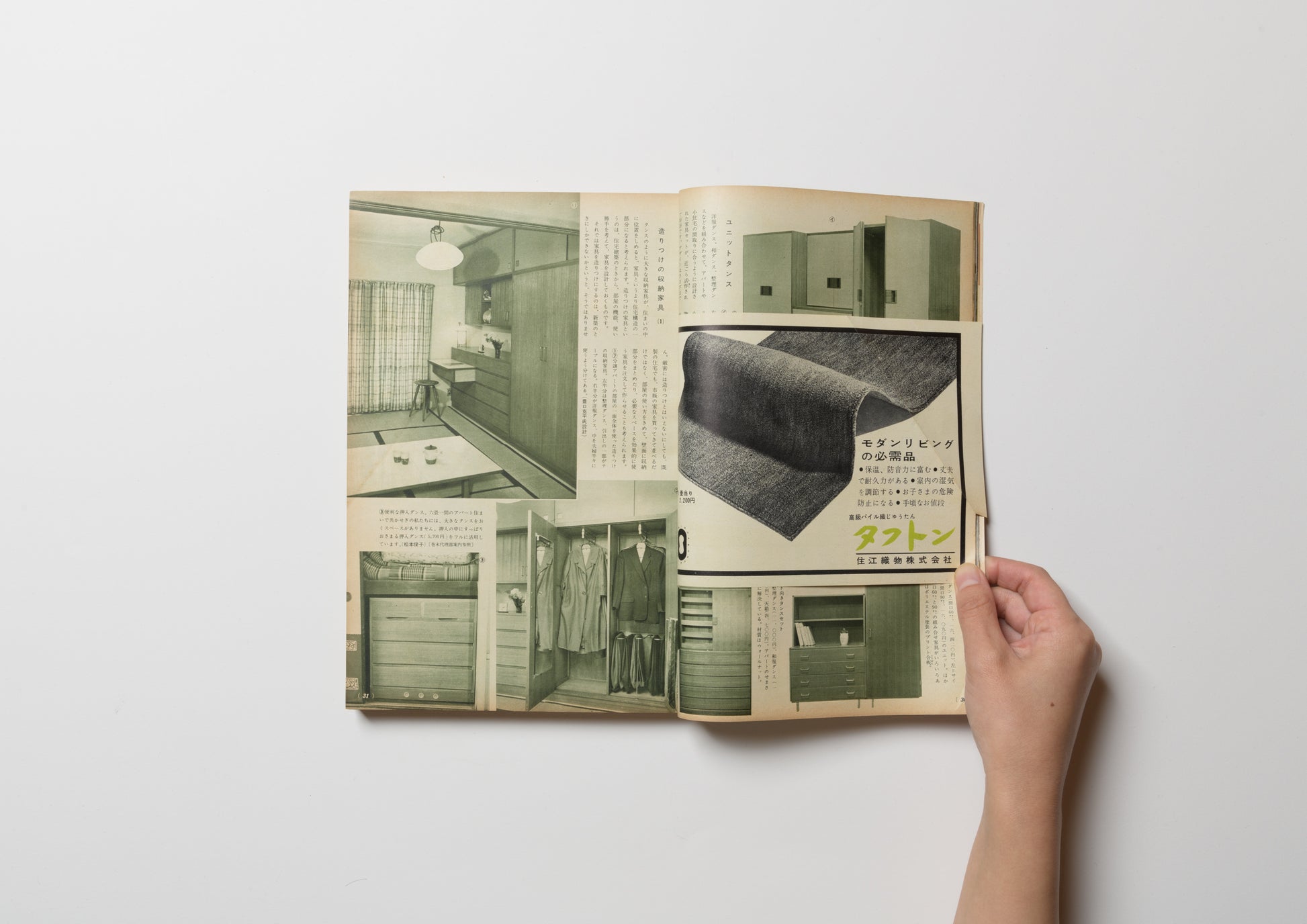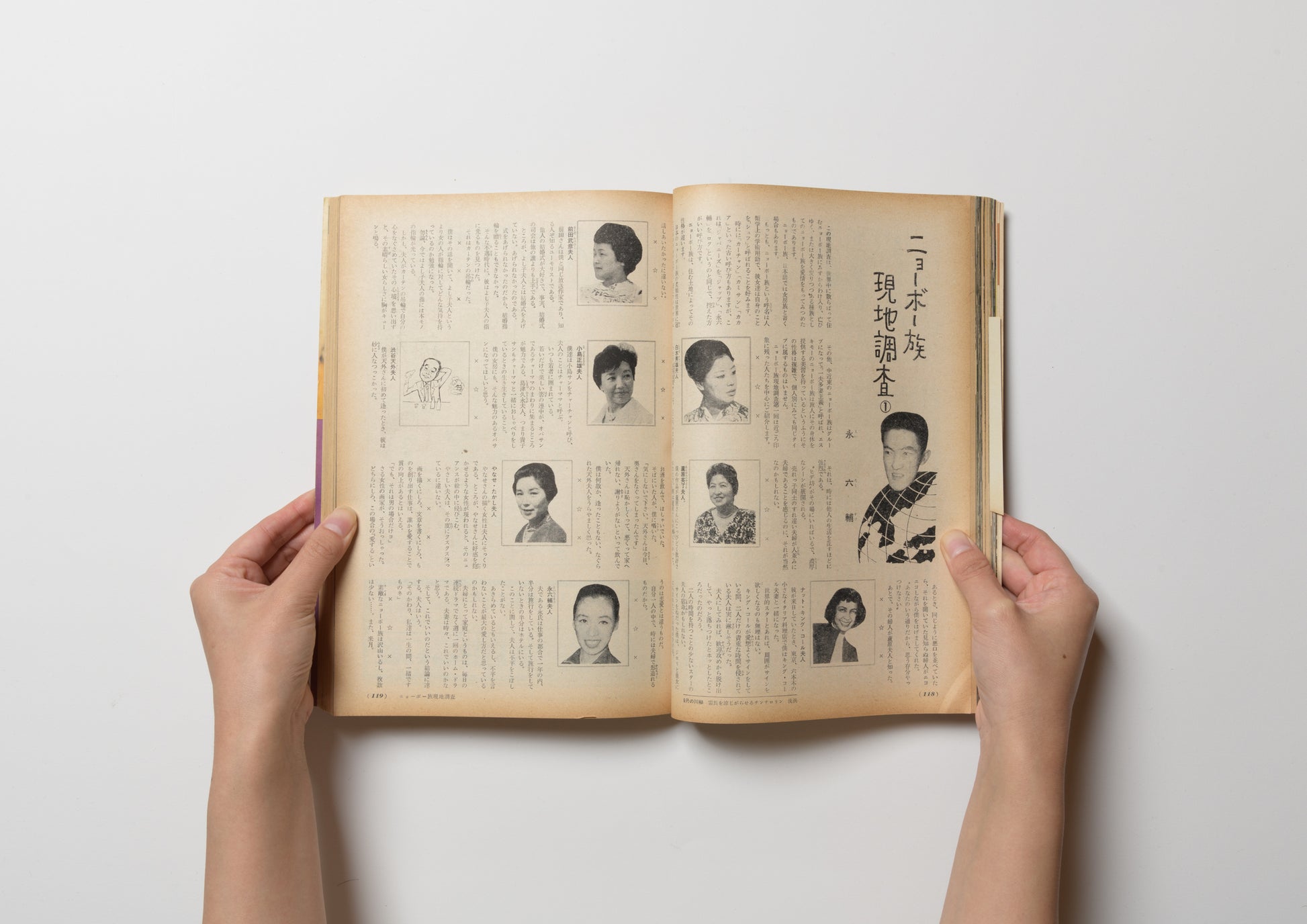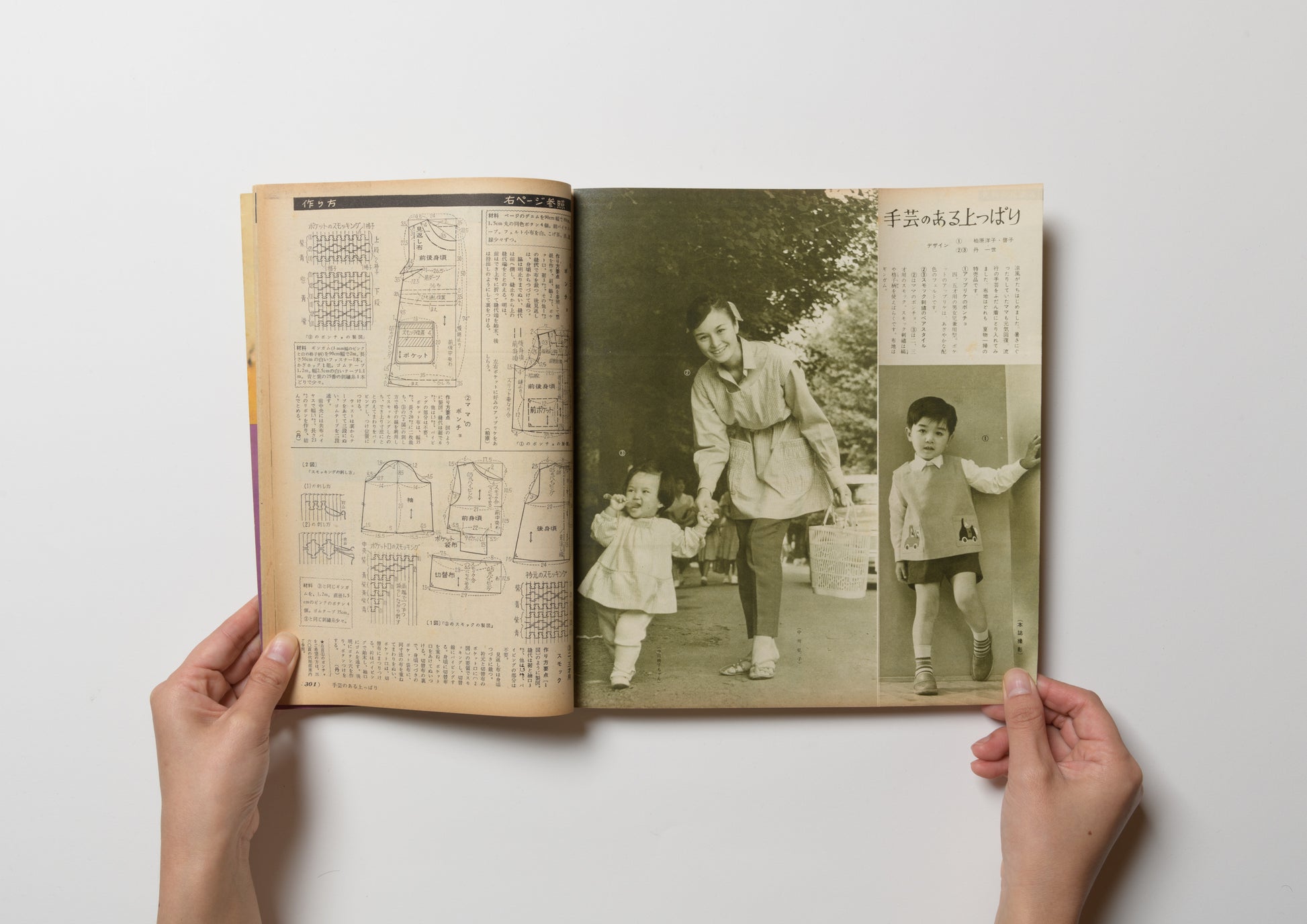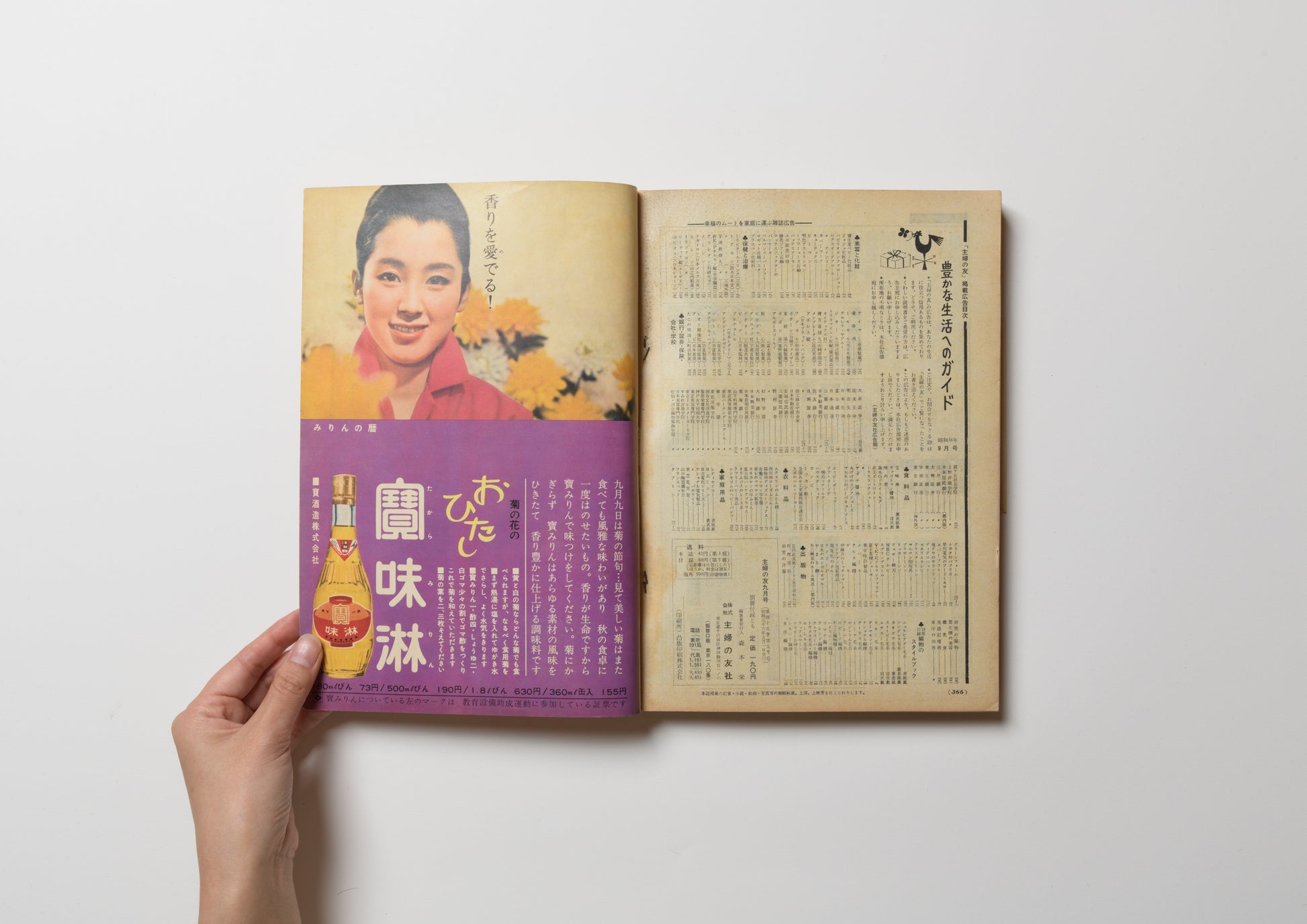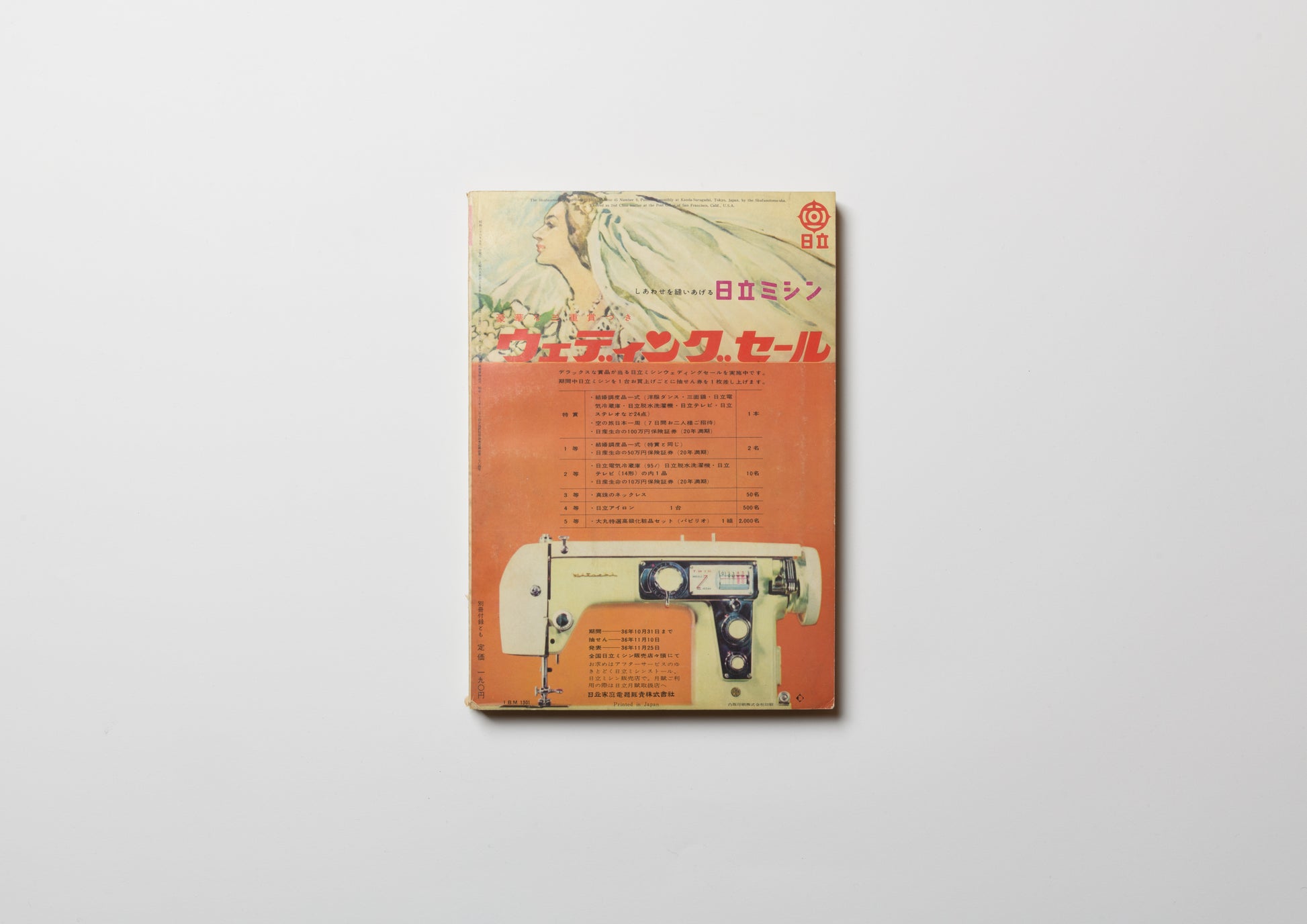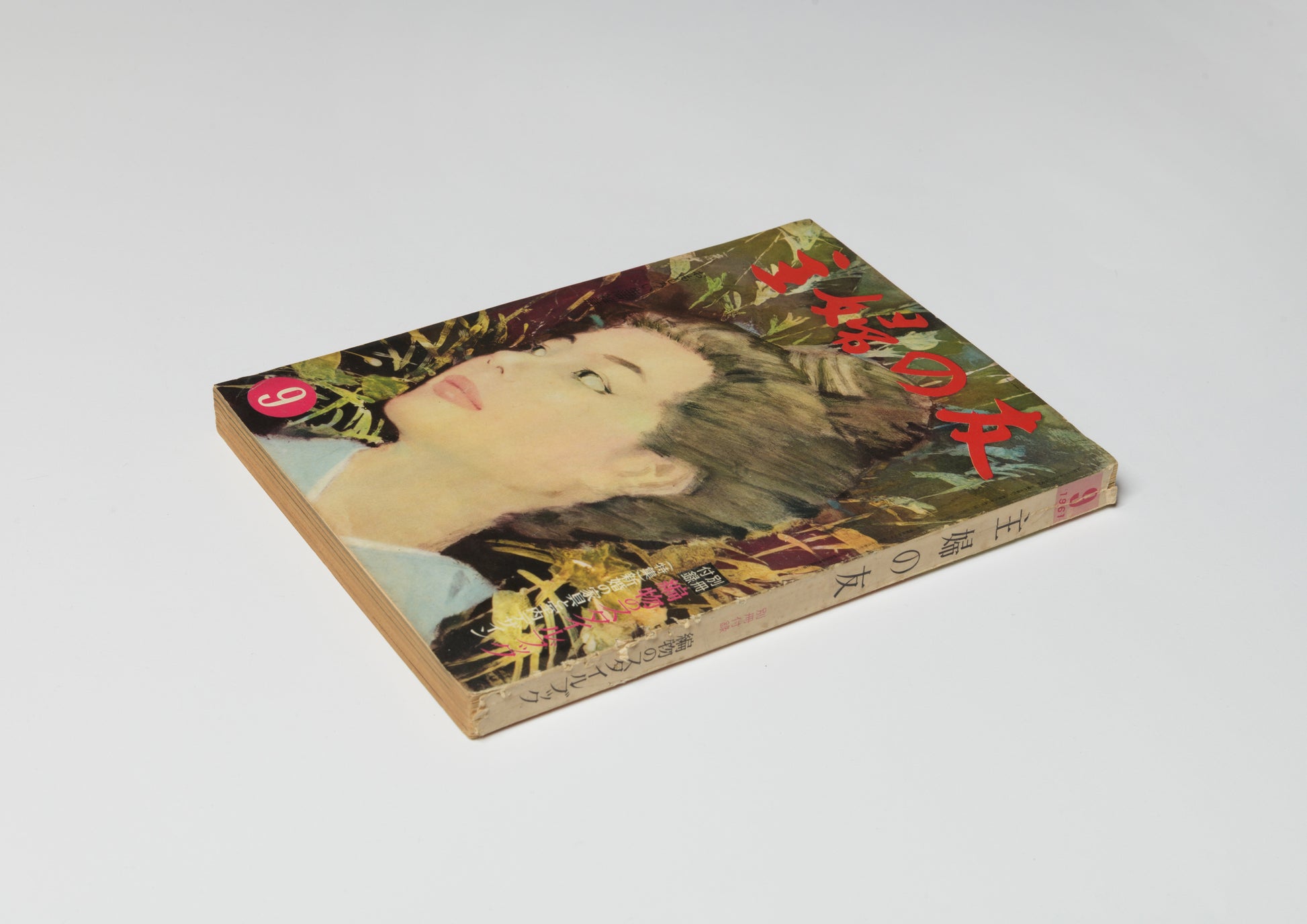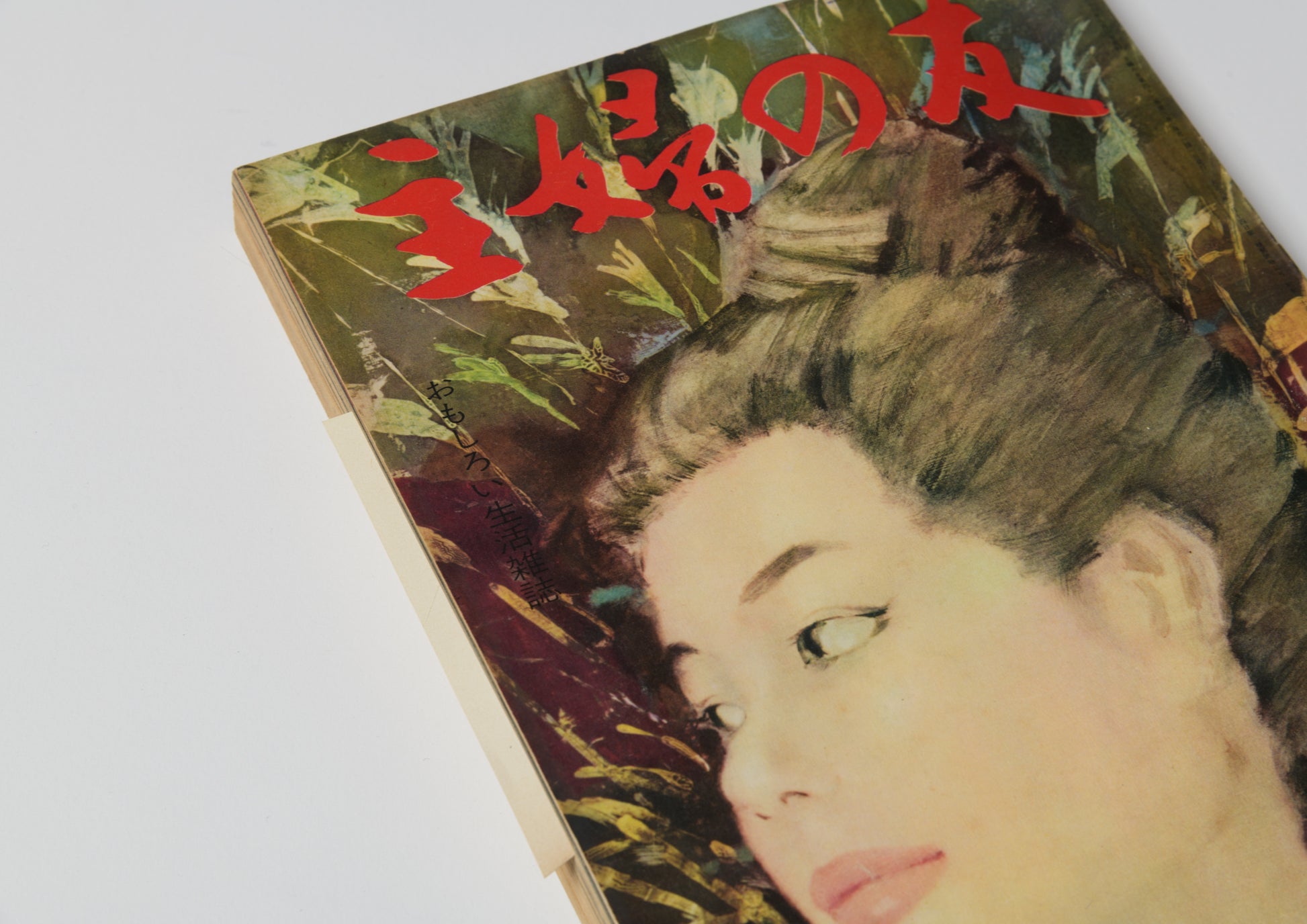Shufu no Tomo/September 1961 issue
Bibliographic Details
- Title
- Shufu no Tomo, September Issue / 主婦の友 九月号
- Editor
- Sakae Morimoto / 森本 栄
- Images
- Cover Painting : Takehiko Miyanaga / 表紙絵:宮永岳彦
- Publisher
- Shufu no Tomo Publishing sha / 主婦の友社
- Year
- 1961
- Size
- h257 × w182mm
- Weight
- 540g
- Pages
- 366 pages
- Language
- Japanese / 日本語
- Binding
- Softbank / ソフトカバー
- Condition
- good
Magazines, advertisements, mattresses.
Survived the Showa era
A housewife's dream.
The editorial department must have put a lot of thought into how to attract the reader's attention within the format of a magazine. The Mitsui & Co. mattress ad sandwiched between pages 30 and 31 is shorter than the main page. Because of this difference in length, a long, vertical, "lucky ear" appears on the edge of the page. The copy that accompanies it in vertical type is "Delivering deluxe dreams...". These days, words like "luxury" and "fine quality" seem to be more popular than "deluxe," but this was 1961, and the word "deluxe" must have had a lot of appeal at the time. Nowadays, the novelty of the "lucky ear" draws your attention.
Although digitalization has progressed and paper magazines have become less and less common, the real charm of magazines is their chaos, both now and in the past. The faces listed in the table of contents of the "Entertainment" section of this magazine are truly deluxe now. I will excuse the names alone, but Rokusuke Nagai, Shuntaro Tanikawa, Osamu Tezuka, Takashi Yanase... they all made their living from countless small jobs back then.
Now, this book, published in the year of its publication, introduces the rooms of eight newlywed couples and their newlywed furniture, such as beds, chests of drawers, and tables, in a "Special Feature on Newlywed Furniture and Interior Designs." The women of that time would no doubt have read every page of the magazine with admiring eyes. Now, more than 60 years later, it is likely that a special feature on newlyweds would not be published in a women's magazine. Over the past half century, women's lifestyles and values have become more diverse, and it is clear that the themes of "family" and "housewife" no longer resonate with the majority. When you hold a book in your hands, the lifestyle and social trends of the time when the book was created are highlighted. The fact that books remain as objects in this way and can be seen through the ages to get a glimpse into the atmosphere of the time is perhaps the unique charm of paper media.
"table of contents"
Special Feature: Furniture and Interior Design for Newlyweds
Special feature: Futons and cotton
Two Love Stories Depicted in "Night and Day"
"Housewife's True Story" Winner: "Gamashara Jinsei"
I will never forget these people: People living in leprosy hospitals
Special Feature: What to do about supplementary education for elementary and junior high school students
Special Feature: An introduction to enjoying matcha at home
Special feature: Beautiful food
Special Feature: Making Money by Making Dreams Come True
The novel Night and Day
The novel Oichi no Oyodonin
Novel: Ice Light
Full-length novel Shirobamba
-
Magazine "Shufu no Tomo"
It was a general magazine for Japanese women that was first published in 1917. It focused on information useful to housewives, and also incorporated women's culture, such as including several full-length novels, and was loved by many women throughout the ages. During the war, it provided information useful to the common people who were struggling in their daily lives, and also provided a place for readers to connect with each other, with special pages for advice and readers to share their wisdom for life. In 1943, demand increased and the number of copies published reached approximately 1.64 million. During the period of high economic growth after the war, it disseminated information that responded to the changes of the times through the spread of home electrical appliances and special features on new lifestyles. In 1964, it adopted the catchphrase "If you get married, you're a housewife's friend," and succeeded in gaining support from the young newlywed generation. At the time, getting married, starting a family, and reading "Shufu no Tomo" in the living room was a lifestyle that many women aspired to. However, with the changing times, such as intensifying competition in women's magazines, women's advancement into society, and the spread of information on the Internet, the demand for print media decreased, and regular publication was sadly discontinued in 2008.
-
Publisher: Shufu no Tomosha
The publisher was founded in 1916 by Takemi Ishikawa (1887-1961), a publishing company owner and editor, and its predecessor was the Tokyo Kasei Kenkyukai. In 1917, the year after the company was founded, it launched the women's magazine Shufu no Tomo (renamed Shufu no Tomo in 1954). It gained popularity as a magazine that provided useful information for all aspects of life, and has produced a succession of magazines that are in tune with the times, such as Gardening Guide in 1973 and Ray, a fashion magazine for young women, in 1988. Shufu no Tomo has continued to grow as a publisher in the fields of practical and specialized books to this day. In particular, it has published many books that are useful for daily life, such as childcare books, cookbooks, and beauty and health books, and has had a great influence on Japanese family life and women's lifestyles since its founding, and continues to take on new challenges while inheriting its traditions.

